Understanding Mechanical Ventilation: Systems, Circuits, and Essential Components #
Mechanical ventilation is a critical medical intervention designed to support or replace spontaneous breathing in patients who are unable to breathe adequately on their own. This process ensures the delivery of oxygen to the lungs and the removal of carbon dioxide, making it indispensable in cases of respiratory failure, severe lung infections, or during surgeries where anesthesia impairs natural breathing. Below, we explore the key elements and technologies involved in mechanical ventilation.
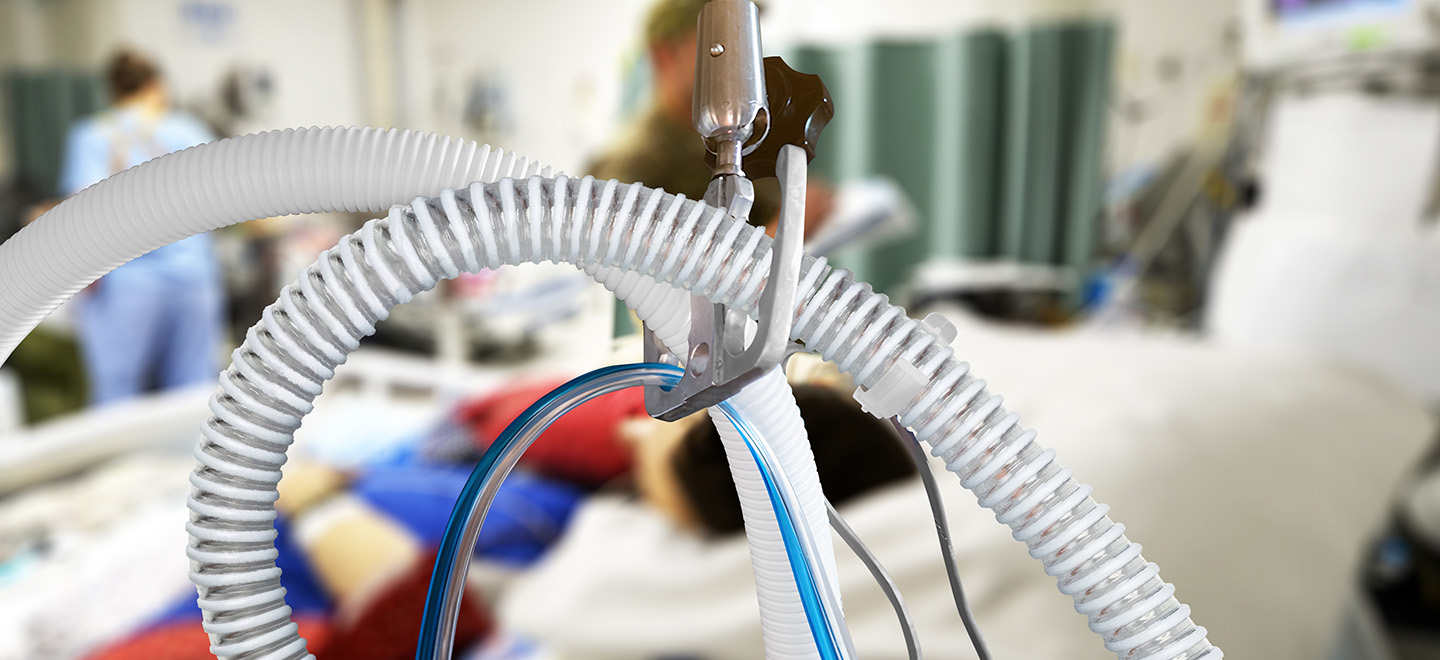
Ventilators: The Core of Mechanical Breathing Support #
A ventilator is a sophisticated machine that assumes the work of breathing for patients who cannot do so independently. It offers various ventilation modes tailored to the patient’s clinical needs, generally categorized as Full Support or Partial Support based on the level of assistance provided.
Breathing Circuits: The Lifeline Between Patient and Ventilator #
Breathing circuits form the essential connection between the patient and the ventilator, enabling the consistent and regulated delivery of medical gases. These circuits can be customized to meet specific clinical requirements.
Types of Breathing Circuits #
Breathing circuits are classified by several characteristics:
-
Materials:
- Disposable (Single use): Typically made from PE/EVA and ESB.
- Reusable: Commonly constructed from Hytrel and Silicone.
-
Tubing Characteristics:
- Corrugated Circuit: Flexible, accordion-like structure for easy bending and stretching without kinking.
- Smoothbore Circuit: Smooth, straight inner surface to minimize airflow resistance and optimize gas delivery.
- Collapsible Circuit: Highly flexible, allowing for expansion and contraction to accommodate different patient positions.
- Configurations:
- Single-limb: Uses one tube for both inhalation and exhalation; compact and suitable for mobile setups.
- Dual-limb: Separate tubes for inhalation and exhalation; ideal for precise, longer-term ventilation.
- Coaxial: Inner and outer tubes combined for space-saving and efficient gas delivery.



| Type | Structure | Space Requirement | Flow Resistance | Gas Efficiency | Applications |
|---|---|---|---|---|---|
| Single Limb Circuit | Single tube for both inhalation/exhalation | Compact, mobile | Highest | Inhaled/exhaled gases may mix; higher flow needed | Shorter or lightweight procedures |
| Dual-limb Circuit | Separate tubes for inhalation and exhalation | More space, less mobile | Lowest | Good gas separation, reduces contamination risk | Longer, precise ventilation needs |
| Coaxial Circuit | Inner and outer tubes combined (coaxial) | Space-saving, compact | Moderate | High efficiency, minimizes gas mixing | Space-limited or varied clinical scenarios |
- Heated vs. Non-Heated Circuits:
- Non-Heated: Standard circuits without heating elements.
- Heated: Incorporate heating wires to maintain optimal gas temperature and humidity. Heated circuits can be single-heated or dual-heated for enhanced performance.
Humidification Systems: Ensuring Optimal Airway Moisture #
Understanding Humidity #
- Absolute Humidity (AH, mgH2O/L): The actual amount of water vapor in a given volume of air.
- Relative Humidity (RH, %): The percentage of water vapor present relative to the maximum possible at a given temperature.
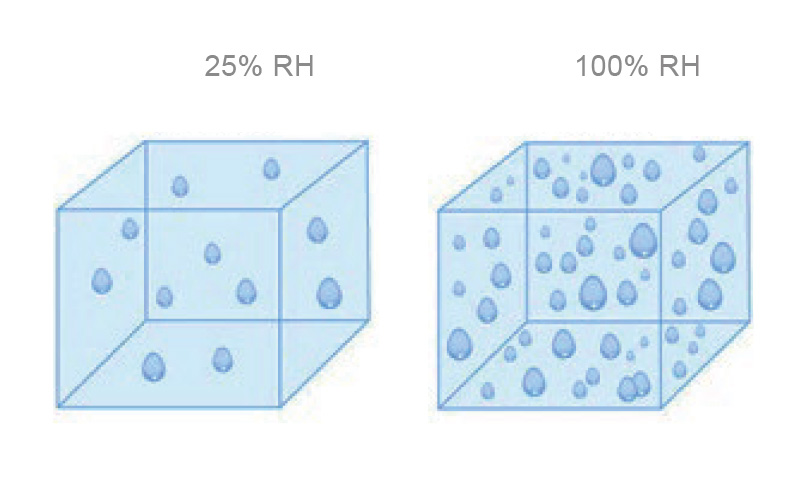
The Importance of Humidity Therapy #
Humidity is vital for the respiratory system. Dry air entering the trachea is conditioned by the mucosa until it reaches the isothermal saturation boundary (ISB), where air is fully saturated at body temperature (37°C, 44 mgH2O/L). Mechanical ventilation and anesthesia often supply colder, drier air, which can impair gas exchange and lung function. Humidity therapy artificially conditions respiratory gases to maintain airway health.
| Condition | Temperature | Humidity (AH) |
|---|---|---|
| Isothermic saturation (ISB) | 37°C | 44 mg/L |
| Medical O2 Gas | 15°C | 0.3 mg/L |
| Room temperature | 22°C | 10 mg/L |
| Oxygen therapy | ambient | 16 mg/L |
| HME | 25-30°C | 17-32 mg/L |
| Heated humidifier | 37°C | 44 mg/L |
Active Humidification #
Active humidification uses electrically powered devices to heat and moisten supplied gases. The main components are the humidifier and humidifier chamber.
- Humi.AIDE™ 5D Humidifier: Digital controls for precise temperature settings, with optional temperature probe for monitoring.
- Humi.AIDE™ 5A Humidifier: Analog temperature adjustment and double overheat protection for safety.
Humidifier Chambers #
 Auto Feeding Humidification Chamber
Auto Feeding Humidification Chamber
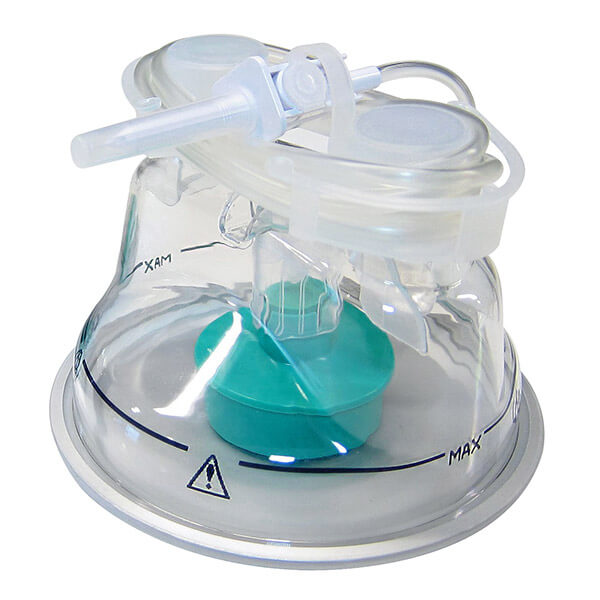 Neonatal Auto Feeding Humidification Chamber
Neonatal Auto Feeding Humidification Chamber
 Humi.AIDE™ Disposable Humidification Chamber
Humi.AIDE™ Disposable Humidification Chamber
 Humi.AIDE™ Durable Humidification Chamber
Humi.AIDE™ Durable Humidification Chamber
- Auto Feeding Humidification Chamber: Sensitive auto-filling for accurate water level control.
- Neonatal Auto Feeding Chamber: Designed for neonates with low dead space and resistance.
- Disposable and Durable Chambers: Options for single-patient use or reusable applications, with features like 360° viewable water lines and secure seals.
Passive Humidification #
Passive humidification includes devices such as Heat and Moisture Exchangers (HME) and Heat and Moisture Exchanger Filters (HMEF). These devices conserve and return heat and moisture to inhaled gases, mimicking the natural humidifying function of the upper airway and helping prevent airway drying and related complications.
- HME: Paper or foam filter media, absorbs and stores heat and moisture from exhaled air, suitable for surgical, anesthesia, and respiratory care.
- HME (with Flex Tube): Foam filter media with flexible tubing for easier patient interface connection.
- HMEF (Paper/Foam): Combines humidification and filtration, providing up to 99.99% efficiency and options for pressure monitoring and gas sampling.
Filters: Protecting Patients, Equipment, and Environment #
Filters are essential for minimizing contamination risks in mechanical ventilation. They protect patients, devices, and the environment, especially in cases involving highly communicable infections.
 Viral/Bacterial Filter
Viral/Bacterial Filter
 Bacterial Filter (Foam)
Bacterial Filter (Foam)
 HEPA Radial Pleated Filter (Paper)
HEPA Radial Pleated Filter (Paper)
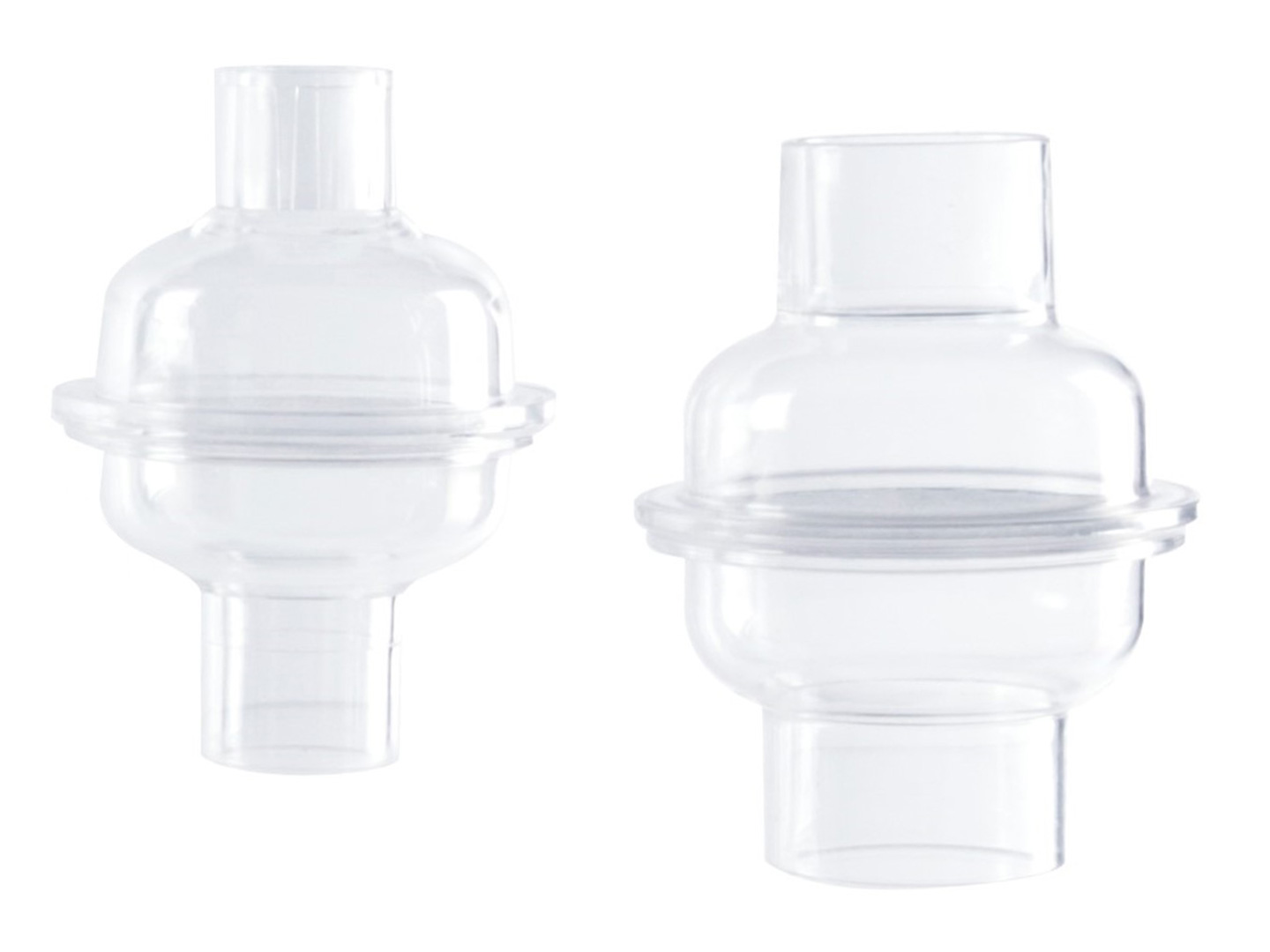 Electrostatic Bacterial Filter
Electrostatic Bacterial Filter
- Viral/Bacterial Filter: High-efficiency filtration to minimize cross-contamination.
- Bacterial Filter (Foam): 0.3 micron filter membrane, up to 99.99% efficiency, available with or without Luer port.
- HEPA Radial Pleated Filter (Paper): Long-term filtration with up to 99.9999% efficiency, includes Luer port for monitoring.
- Electrostatic Bacterial Filter: Electrostatic media for up to 99.99% filtration efficiency.
Accessories & Connectors: Enhancing Circuit Functionality #
Manifolds #
Manifolds regulate expiratory flow in single or dual limb breathing circuits, controlled by the ventilator. Options include 3-way and 2-way manifolds for different circuit configurations.
- 3-Way Manifold: For single limb circuits, available in disposable or durable versions.
- 2-Way Manifold: For dual limb (J) circuits, also available in disposable or durable options.
Test Lungs #
Test lungs simulate human lung behavior for testing and calibrating ventilators and anesthesia machines, as well as for training purposes.
- Venti. Plus™ Test Lung: Simulates adult and pediatric lung resistance and compliance.
- Babi.Plus™ nTest Lung: Features adjustable compliance and pressure monitoring for neonatal applications.
Connectors #
Connectors are vital for assembling secure and efficient breathing circuits. Types include:
- Straight connectors: Join tubing of different diameters.
- Wye connectors: Merge inspiratory and expiratory limbs in dual-limb circuits.
- Tee connectors: Used for assembling various circuit configurations.
 Corrugated Circuit
Corrugated Circuit Smoothbore Circuit
Smoothbore Circuit Collapsible Circuit
Collapsible Circuit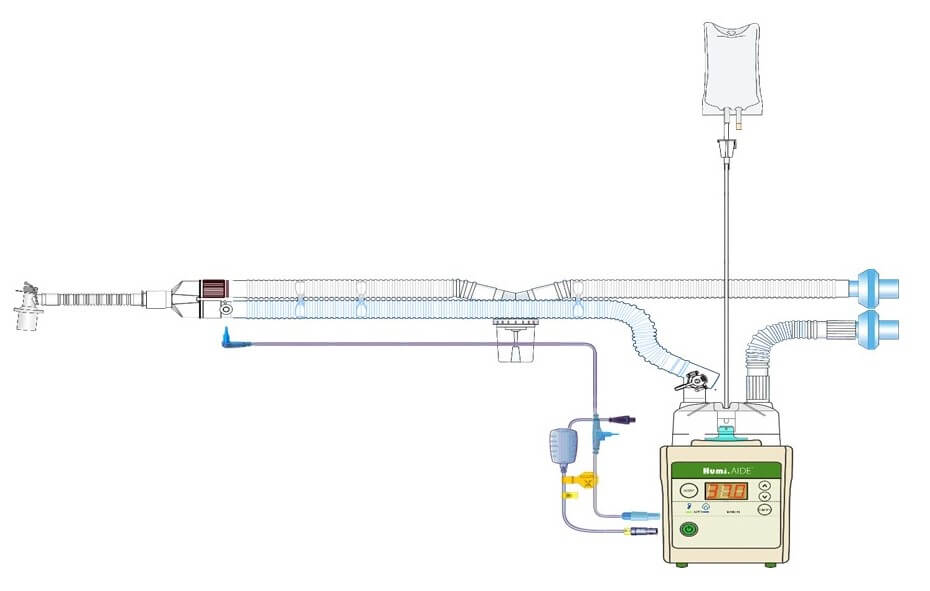 Single Heated Wire Circuit
Single Heated Wire Circuit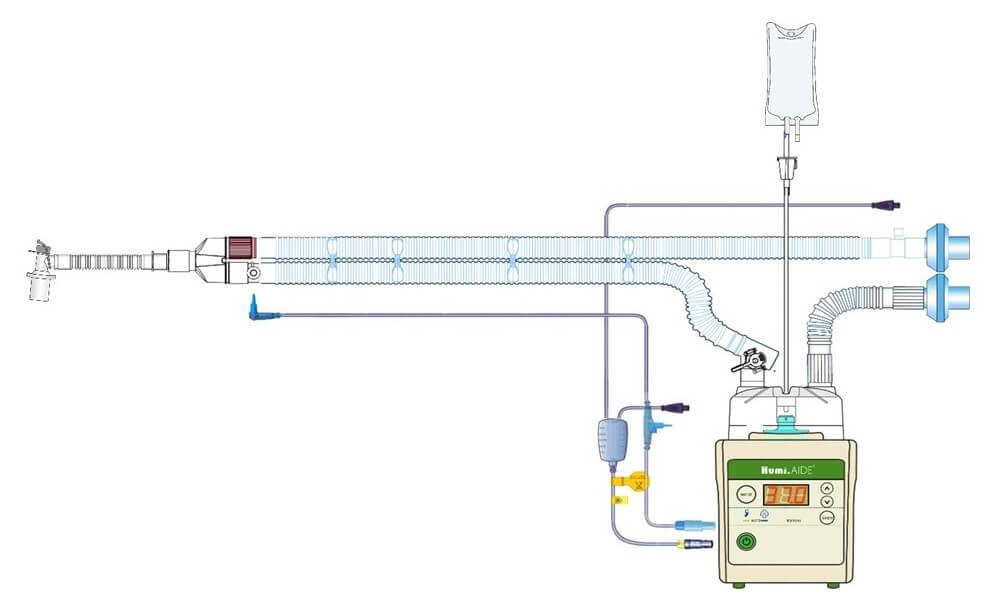 Dual Heated Wire Circuit
Dual Heated Wire Circuit Humi.AIDE™ 5D Humidifier
Humi.AIDE™ 5D Humidifier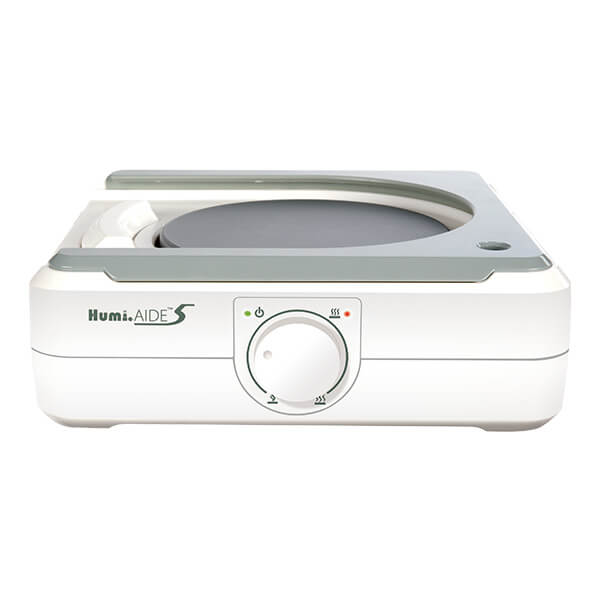 Humi.AIDE™ 5A Humidifier
Humi.AIDE™ 5A Humidifier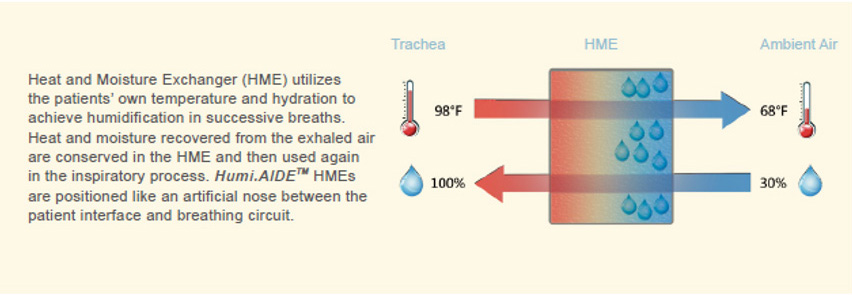 Heat and Moisture Exchanger (HME)
Heat and Moisture Exchanger (HME) Heat and Moisture Exchanger Filter (HMEF)
Heat and Moisture Exchanger Filter (HMEF)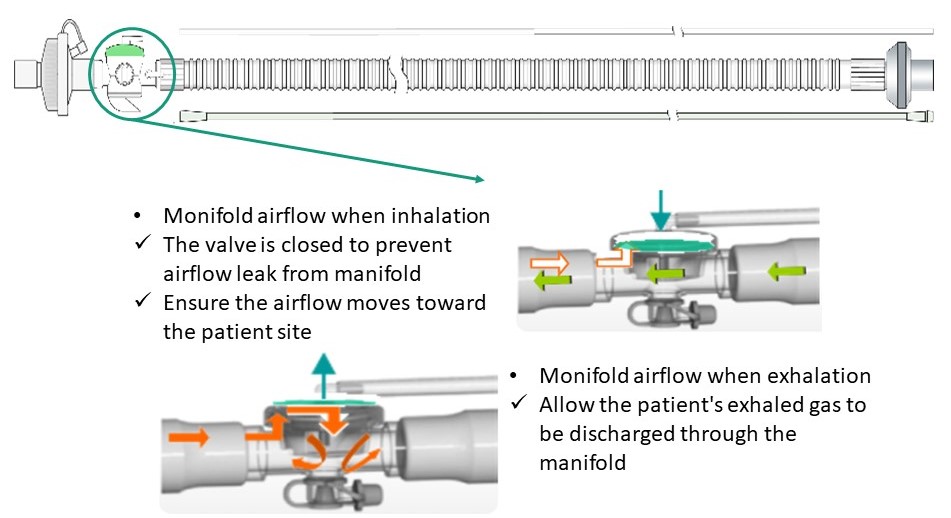 3-Way Manifold
3-Way Manifold 2-Way Manifold
2-Way Manifold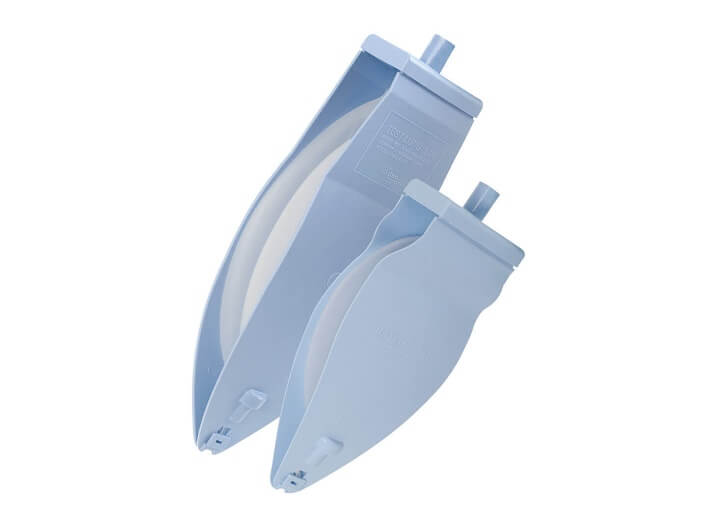 Venti. Plus™ Test Lung
Venti. Plus™ Test Lung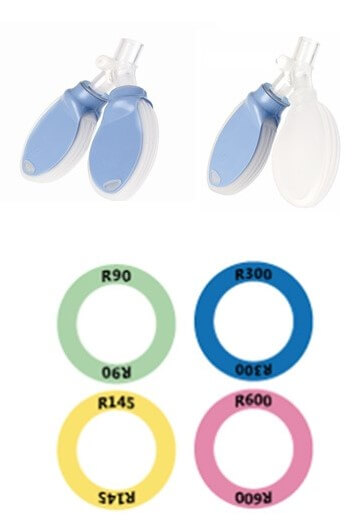 Babi.Plus™ nTest Lung
Babi.Plus™ nTest Lung